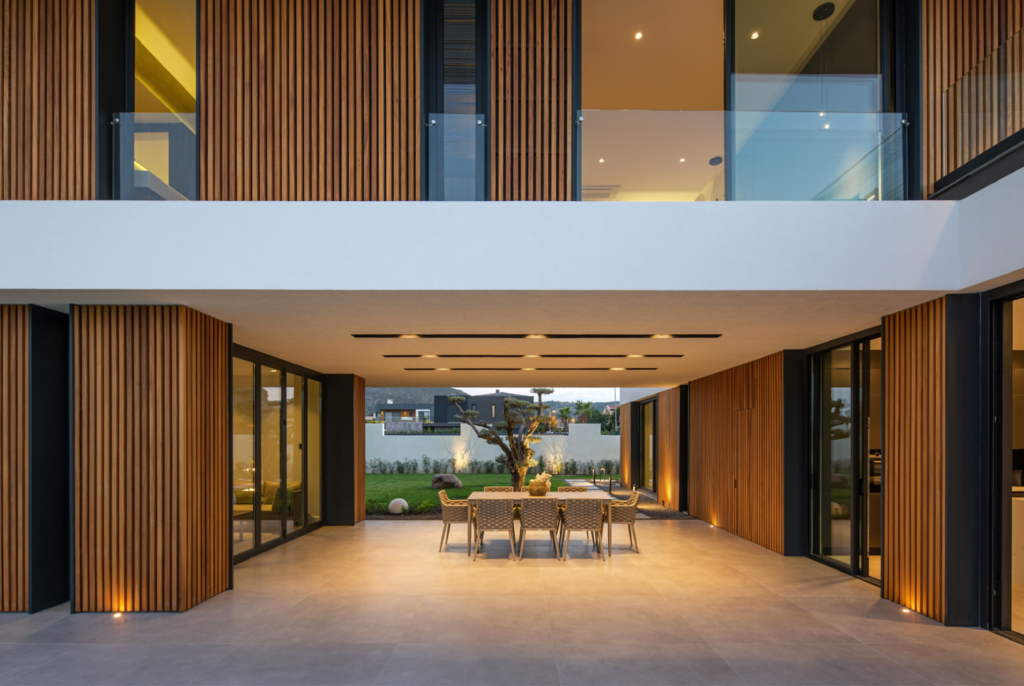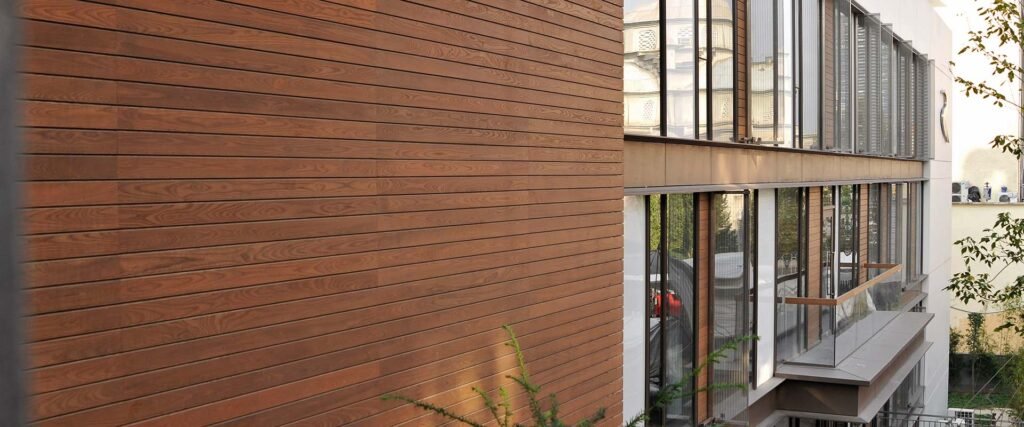Thermally modified poplar offers a highly durable and eco-friendly solution for siding and decking projects.
While many builders are increasingly seeking materials that balance performance and sustainability, thermally modified wood has emerged as arguably the best alternative to traditional hardwoods.
But why?
Let’s take a look at the thermally modified poplar to get a better understanding.
How Thermal Modification Strengthens Poplar
Thermal modification is a high-heat process performed in an oxygen-free environment, where the structure of the wood is transformed at a cellular level.
This process typically heats the wood to extremely high temperatures, which effectively removes moisture and organic compounds that contribute to warping, twisting, and decay over time.
During this process, poplar wood undergoes several stages:
- Kiln Drying
- Heating
- Cooling
At the end of the process, the new product—thermally modified poplar—is significantly stronger. How much stronger? We’ll talk about that next.
Yellow Poplar Is Best For Thermal Modification
Poplar, specifically Yellow Poplar, is a fast-growing hardwood commonly found in North America—known for its lightweight and affordability. But in its natural state, poplar lacks the durability of denser hardwoods.
However, once it is thermally modified, it becomes a much more resilient product with improved stability and moisture resistance, which makes thermally modified poplar a competitor to expensive woods like Ipe and Teak—particularly in siding and decking applications.
Cost Considerations for Thermally Modified Poplar

While thermally modified wood, including poplar, typically costs more upfront than untreated wood, its long-term savings due to reduced maintenance make it a solid investment.
Typically, contractors can expect to pay approximately $4.65 to $5.10 per square foot for thermally modified poplar decking or siding.
Best Uses for Thermally Modified Poplar
Now that you know how much thermally modified poplar may cost, you should plan on using it for one of the following applications:
Siding/Cladding
Thermally modified poplar is an ideal material for siding. Simply put, it offers both durability and aesthetic appeal.
And the thermally modified wood process helps the poplar develop a deep, rich color that can be maintained with an oil-based finish or left to naturally weather into a silver-gray patina.
Benefits for Siding Projects:
- High resistance to water and insect damage
- No frequent treatments
- Natural wood finish or gray patina
Decking
Poplar’s stability also makes it an excellent choice for decking—particularly in climates with extreme weather conditions.
Thermally modified poplar offers resistance to moisture and warping, which reduces the need for costly repairs and replacements.
Benefits for Decking Projects:
- Reduced moisture absorption, preventing warping or cupping.
- Lightweight and easy to work with, especially for large-scale decking projects.
- Natural decay resistance, offering long-term durability even in exposed environments.
Installation Tips
To ensure thermally modified poplar performs the best that it can—whether as siding, cladding, or decking—it’s essential to follow proper installation practices.
Here are some guidelines:
Acclimation
Before installation, you should allow the poplar to acclimate to the local environment. Store the wood in the installation area for at least 48 hours to adjust to the site’s temperature and humidity.
Fasteners
Use stainless steel or corrosion-resistant fasteners to avoid rust or staining of the wood over time. Screws should be driven straight to prevent splitting.
Ventilation
Ensure proper ventilation behind siding to allow airflow and prevent moisture buildup, which can cause issues over time.
Maintenance Tips
Thermally modified poplar requires minimal maintenance, but following these practices will help preserve its appearance and performance:
Finishes
To maintain the rich, deep color of thermally modified poplar, apply an oil-based finish, such as a UV-protective oil to shield the wood from fading.
Cleaning
Clean the wood periodically with a mild soap and water solution to remove dirt and debris. Avoid using pressure washers, as high-pressure water can damage the surface of the wood and shorten its lifespan.
Why Choose Thermally Modified Poplar Over Other Woods?
Thermally modified poplar stands out from traditional softwoods and pressure-treated lumber for several reasons. To name a few:
Durability
Poplar rivals tropical hardwoods like Ipe in terms of durability but without the environmental costs associated with importing exotic species.
Eco-Friendliness
The thermal modification process uses no chemicals, aligning with sustainable building practices. Poplar, sourced from fast-growing forests in North America, reduces the demand for slow-growing, tropical hardwoods.
Cost-Effective Alternative
While thermally modified poplar may cost more initially than pressure-treated wood, it offers better longevity, which, over time, lowers the overall project cost for maintenance and replacements.
Aesthetics
Thermally modified poplar also offers aesthetic advantages. The process gives the wood a rich, chocolate-brown color, which makes it visually appealing for modern architectural designs.
Selecting Thermally Modified Poplar for Your Projects
When using thermally modified poplar, it’s important to consider its durability, resistance to moisture, and eco-friendly attributes.
The reason is, thermally modified poplar offers versatility for both decking and siding that last for years.If you’re exploring other thermally modified wood options, explore more content on Thermally Modified!

